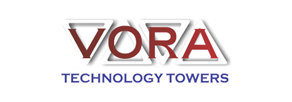
Pros and Cons of SMSFs (Self-Managed Superannuation Funds)

Self-Managed Superannuation Funds (SMSFs) have become increasingly popular in Australia, with over 1.1 million Australians now managing their retirement savings through an SMSF. SMSFs offer a range of benefits, including greater control, investment flexibility, and potential tax advantages. However, they also come with significant responsibilities and risks that must be carefully considered.
The Benefits of SMSFs
-
Investment Control and Flexibility
One of the primary advantages of an SMSF is the level of control and flexibility it provides over investment decisions. SMSF trustees can choose from a wide range of investment options, including direct shares, property, managed funds, and alternative assets, allowing them to craft a customized SMSF investment strategy. This allows SMSF members to tailor their investment strategy to their specific goals and risk tolerance, rather than being limited to the options offered by a retail or industry super fund.
-
Tax Advantages
SMSFs enjoy several tax benefits that can help maximize retirement savings. The tax rate on SMSF earnings is a flat 15%, which is lower than the marginal tax rates that apply to individual members. Additionally, SMSF members have greater control over the timing of asset sales, allowing them to manage capital gains tax more effectively. This can be particularly beneficial when transitioning to retirement, as SMSF assets can be rolled into a tax-free pension account.
-
Retirement Income Control
An SMSF provides members with a high degree of control over their retirement income. SMSF trustees can decide how and when to draw down their retirement advantages, whether that’s through a lump sum, an account-based pension, or a combination of both. This flexibility can be valuable in tailoring a retirement income strategy to individual needs and preferences.
-
Asset Protection
In the event of bankruptcy, the assets held within an SMSF are generally protected from creditors, providing an additional layer of asset protection for members. This can be particularly important for small business owners or self-employed individuals who may have a higher risk of financial difficulties.
-
Pooling Family Superannuation
SMSFs can be an effective way for families to pool their superannuation resources and work towards shared financial goals. Up to six members can be part of an SMSF, allowing families to combine their retirement savings and potentially benefit from economies of scale and shared investment opportunities.
The Drawbacks of SMSFs
-
Significant Time and Effort Required
Managing an SMSF requires a significant time commitment and a high level of financial and legal expertise. SMSF trustees are responsible for all aspects of fund management, including investment decisions, compliance with regulations, record-keeping, and reporting to the Australian Taxation Office (ATO). This can be a significant burden, especially for those with limited financial knowledge or time to dedicate to their SMSF.
-
Compliance and Regulatory Risks
SMSFs are subject to a complex regulatory environment, with strict rules and requirements that must be followed. Failure to comply with these regulations can result in severe penalties, including the imposition of a 47% tax rate on the fund’s assets. SMSF trustees must have a thorough understanding of their legal obligations and ensure that the fund is operated by the relevant laws and regulations.
-
Investment Risks
While SMSFs offer greater investment flexibility, this also comes with increased investment risks. SMSF trustees are responsible for researching, selecting, and monitoring their investments, which can be a challenging and time-consuming task. Poorly diversified or high-risk investment strategies can expose the SMSF to significant volatility and potential losses.
-
Costs and Fees
Setting up and maintaining an SMSF can be more expensive than joining a retail or industry super fund. In addition to the initial setup costs, SMSF trustees must pay for ongoing administration, accounting, and compliance services, which can add up quickly. These costs can erode the potential benefits of an SMSF, particularly for smaller funds with lower balances.
-
Lack of Economies of Scale
Compared to larger super funds, SMSFs may not benefit from the same economies of scale, which can result in higher investment and operational costs. This can be a particular challenge for smaller SMSFs with lower balances, as the fixed costs of running the fund may be more difficult to justify.
Learn More – What is a 401k in Australia? 401k Vs Superannuation
Key Differences Between SMSFs and Traditional Superannuation Funds
- SMSFs provide greater control and flexibility over investments, while traditional funds offer a broader range of investment options
- SMSFs enjoy a lower tax rate of 15% and can offset other tax credits, making them more tax-efficient than traditional funds
- SMSFs allow for a broader range of investments, including direct property, shares, and managed funds, while traditional funds typically offer a narrower range
- SMSFs tend to have fixed fees for services, which can be more transparent and cost-effective, while traditional funds often have higher fees due to the costs of managing a larger pool of funds
- SMSF assets are generally protected from creditors in the event of bankruptcy, while traditional funds may not offer the same level of asset protection
- SMSFs provide greater control over retirement income distribution, allowing for lump sums, pensions, or a combination, while traditional funds typically offer a more limited range of options
- SMSFs are designed for a Trusteeship of six or fewer, making them suitable for family members to pool their superannuation together, while traditional funds are often not designed for this purpose
- SMSFs can be set up DIY, which can be more cost-effective, while traditional funds typically require professional setup and management
- SMSFs allow for borrowing through limited recourse borrowing arrangements (LRBAs), enabling the use of leverage in superannuation investments, while traditional funds do not offer the same level of borrowing capabilities
- SMSFs are found to be more engaging and satisfying for fund members due to greater control and transparency, while traditional funds may not offer the same level of engagement and satisfaction.
Outsourcing SMSF Compliance to Professionals
Outsourcing SMSF compliance to professionals can be a valuable option for those who do not have the necessary expertise or time to manage their SMSF effectively. Professionals can provide a range of services, including SMSF setup, ongoing administration, and compliance reporting, allowing individuals to focus on other aspects of their life or business. By outsourcing SMSF Accounting, individuals can reduce the risk of non-compliance and potential penalties, while also benefiting from the expertise and knowledge of professionals in the field.
Conclusion
Self-Managed Superannuation Funds (SMSFs) can be a valuable option for Australians who have the time, expertise, and resources to manage their retirement savings. The benefits of SMSFs, including greater investment control, tax advantages, and retirement income flexibility, can be significant. However, the responsibilities and risks associated with running an SMSF should not be underestimated.
Before deciding to establish an SMSF, it is crucial to carefully consider your financial knowledge, investment experience, and ability to dedicate the necessary time and effort to managing the fund.









